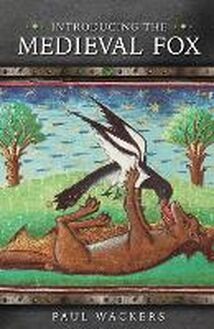-
 Univers
Univers
-
 Ebooks
Ebooks
-
 Livres audio
Livres audio
-
 Presse
Presse
-
 Podcasts
Podcasts
-
 BD
BD
-
 Documents
Documents
-
- Cours
- Révisions
- Ressources pédagogiques
- Sciences de l’éducation
- Manuels scolaires
- Langues
- Travaux de classe
- Annales de BEP
- Etudes supérieures
- Maternelle et primaire
- Fiches de lecture
- Orientation scolaire
- Méthodologie
- Corrigés de devoir
- Annales d’examens et concours
- Annales du bac
- Annales du brevet
- Rapports de stage
La lecture à portée de main
Découvre YouScribe en t'inscrivant gratuitement
Je m'inscrisDécouvre YouScribe en t'inscrivant gratuitement
Je m'inscrisEn savoir plus
En savoir plus

Description
From Phoenix to Chauntecleer: Medieval English Animal Poetry Swiss Studies in English 120. Tübingen: Francke Verlag. 1996.
Honegger, Thomas and Fanfan Chen (eds.). 2009. Good Dragons are Rare. An Inquiry into Literary Dragons East and West. (ALPH 5). Frankfurt am Main etc.: Peter Lang.
Honegger, Thomas. 2009. ‘A good dragon is hard to find, or from draconitas to draco.’ In Fanfan Chen and Thomas Honegger (eds.). 2009. Good Dragons are Rare. An Inquiry into Literary Dragons East and West. (ALPH 5). Frankfurt am Main etc.: Peter Lang, 27-59.
Honegger, Thomas. 2009. ‘Draco litterarius: Some Thoughts on an Imaginary Beast.’ In Sabine Obermaier (ed.). 2009. Tiere und Fabelwesen im Mittelalter. Berlin and New York: Walter de Gruyter, 133-145.
Honegger, Thomas. 2011. ‘Drachen – Gedanken zur Typologie eines phantastischen Wesens.’ In Oliver Bidlo, Julian Eilmann and Frank Weinreich (eds.). 2011. Zwischen den Spiegeln. Neue Perspektiven auf die Phantastik. Essen: Oldib Verlag, 92-106.
Honegger, Thomas. 2011. ‘From Bestiary onto Screen: Dragons in Film.’ In Renate Bauer and Ulrike Krischke (eds.). 2011. Fact and Fiction: From the Middle Ages to Modern Times. Essays Presented to Hans Sauer on the Occasion of his 65th Birthday. (Texte und Untersuchungen zur Englischen Philologie 37.) Frankfurt am Main: Peter Lang, 197-215.
Honegger, Thomas. 2012. ‘Der Drache: Herausforderer von Heiligen und Helden.’ In Luca Tori and Aline Steinbrecher (eds.). Animali: Tiere und Fabelwesen von der Antike bis zur Neuzeit. Geneva and Milano: Skira, 192-203.
Honegger, Thomas. 2016. ‘Allegorical Hares and Real Dragons – Animals in Medieval Literature and Beyond.’ In Roman Bartosch (ed.). 2016. Animal Poetics. Special issue of Anglistik 27.2: 47-57.
Honegger, Thomas (together with Oliver Bidlo and Frank Weinreich) (eds.). 2016. Fantastic Animals – Animals in the Fantastic. (Fastitocalon 6). Trier: Wissenschaftlicher Verlag Trier.
Honegger, Thomas. 2017. ‘The Sea-dragon – in Search of an Elusive Creature’. In Gerlinde Huber-Rebenich et al (eds.). Symbolik des Wassers im Mittelalter. Berlin etc.: de Gruyter, 221-231.
Honegger, Thomas. 2019. ‘Zoology.’ Routledge Encyclopedia of Medieval Studies.
The aim of this book is to explore the characteristics of the medieval dragon and discuss the sometimes differing views found in the relevant medieval text types. Based on an intimate knowledge of the primary texts, the study presents new interpretations of well-known literary works, and also takes into consideration paintings and other depictions of these beasts. Dragons were designed not only to frighten but also to fire the imagination, and provide a suitably huge and evil creature for the hero to overcome – yet there is far more to them than reptilian adversaries. This book introduces the medieval dragon via brief, accurate and clear chapters on its natural history, religion, literature and folklore, and concludes with how the dragon – from Beowulf to Tolkien, Disney and Potter – is constantly revived.
Preface
List of illustrations
Introduction
The Dragon and Medieval Scholarship
The Dragon and Medieval Religion
The Medieval Dragon and Folklore
The Dragon and Medieval Literature
Outlook and Conclusion
Endnotes
Further reading
Bibliography
Index
Sujets
Informations
| Publié par | University of Wales Press |
| Date de parution | 15 août 2019 |
| Nombre de lectures | 1 |
| EAN13 | 9781786834690 |
| Langue | English |
| Poids de l'ouvrage | 17 Mo |
Informations légales : prix de location à la page 0,0750€. Cette information est donnée uniquement à titre indicatif conformément à la législation en vigueur.
Extrait
-
 Univers
Univers
-
 Ebooks
Ebooks
-
 Livres audio
Livres audio
-
 Presse
Presse
-
 Podcasts
Podcasts
-
 BD
BD
-
 Documents
Documents
-
Jeunesse
-
Littérature
-
Ressources professionnelles
-
Santé et bien-être
-
Savoirs
-
Education
-
Loisirs et hobbies
-
Art, musique et cinéma
-
Actualité et débat de société
-
Jeunesse
-
Littérature
-
Ressources professionnelles
-
Santé et bien-être
-
Savoirs
-
Education
-
Loisirs et hobbies
-
Art, musique et cinéma
-
Actualité et débat de société
-
Actualités
-
Lifestyle
-
Presse jeunesse
-
Presse professionnelle
-
Pratique
-
Presse sportive
-
Presse internationale
-
Culture & Médias
-
Action et Aventures
-
Science-fiction et Fantasy
-
Société
-
Jeunesse
-
Littérature
-
Ressources professionnelles
-
Santé et bien-être
-
Savoirs
-
Education
-
Loisirs et hobbies
-
Art, musique et cinéma
-
Actualité et débat de société
- Cours
- Révisions
- Ressources pédagogiques
- Sciences de l’éducation
- Manuels scolaires
- Langues
- Travaux de classe
- Annales de BEP
- Etudes supérieures
- Maternelle et primaire
- Fiches de lecture
- Orientation scolaire
- Méthodologie
- Corrigés de devoir
- Annales d’examens et concours
- Annales du bac
- Annales du brevet
- Rapports de stage











